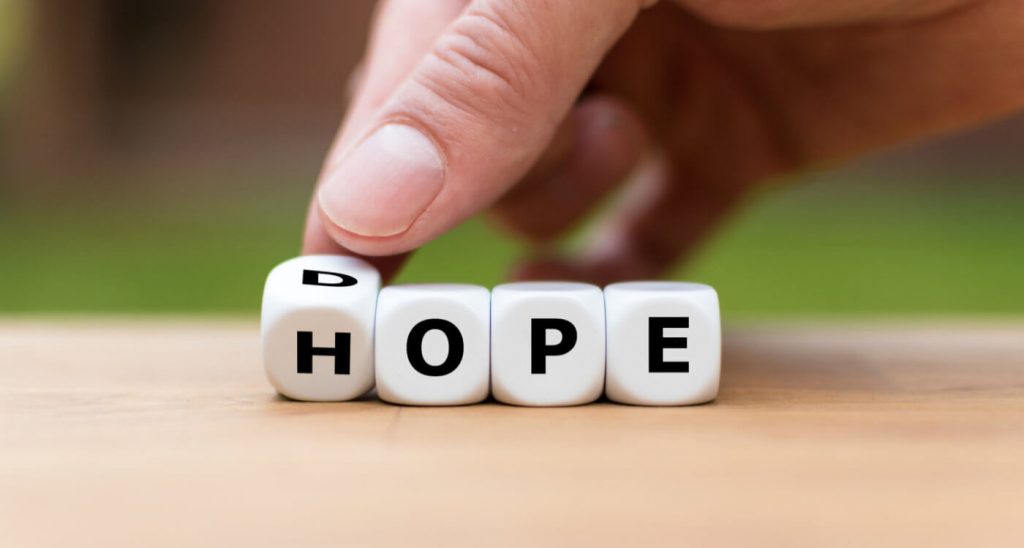Anxiety, Addiction, and Presence

Seeking spiritual wholeness in the addiction recovery process
The concept of anxiety, generalized to a high degree, represents the anticipatory dread through which we relate to a future that has not yet happened. Looking toward the unknown and unknowable future, the anxious mind assumes that somehow, someway whatever arrives will be overwhelming. When it comes to understanding anxiety, there is an essential distinction that must be made between the general experience of being human and the psychiatric symptoms that interfere with daily functioning. While a clinical diagnosis of anxiety is not to be found in all individuals, the base level of anxiety that constitutes the human experience is certainly found at the heart of every individual.
Faced with the unpredictability that drapes the future, the anxious soul feels driven to wrestle some form of control from experience itself. Cut through with the dreadful expectations we feel sure will come to pass, the natural impulse is to grab hold of any vestige of certainty possible. It is the hope toward power and control wherein the anxious soul finds the fragments of comfort available to it.
The natural places where the anxious soul seeks the comforts of perceived control are in the all-too-human drives toward power and agency. Power through financial security; power through relationships; power through intelligence; power through health; power through certainty. But what happens when the typical forms of power no longer offer the fantasies of control? What happens when the discomfort of the soul sees beyond the futile attempts at artificial constructs of comfort? When the soul cannot find the salve of certainty it so desperately seeks, the individual begins to search out more potent and powerful forms of control.
This is where addiction comes into play.
If a person who has spent their entire adult lives under the threatening shadow of anxiety finds comfort in a substance that alters the mind through the intoxicating spell of elements, the rational thing is not to say “I won’t use this substance ever again.” Rather, the rational thing to do is continue using that substance for the relief that it provides. For there is nothing more dangerous to an individual than a taste of victory.
The substance provides an artificial sense of control and stability. In the intoxicated mind, the future and past no longer matter; all that exists is the present moment. This sense of presentness is what rests at the heart of the addictive process. Faced with the infinite threat of an undefined future, the substance erases possibility and throws the user into a momentary lapse in judgment wherein everything feels okay. It is for this reason that anxiety plays such a significant role in the development of addiction.
In order to find a path out of the hellish landscape of addiction, we must first understand the impulse at the heart of dependency. If addiction represents the attempt to wrestle comfort and certainty from existence, then the pathway beyond addiction must offer the same relief, albeit in a lasting, non-destructive way. Enter the concept of spirituality within the concept of recovery. Expressed most comprehensively in the “twelve-step” models of recovery, yet rooted in the deep and rich history of psycho-spiritual traditions, the only way out of the broken and false wholeness that substances appear to offer is a more constructive and meaningful wholeness, namely the work of spirituality.
Because the addict, or the potential addict, craves wholeness and control so deeply, the typical objects of desire no longer satisfy them. Moving to the limit of experience as symbolized by mind altering chemicals, the addict, in hopes of discovering everlasting comfort, returns ashen-faced with the painful realization that even the strongest possible drugs this world has to offer are not strong enough to settle the weariness of the spirit. But instead of despair, the recovering addict decides to uncover the hidden light of meaning that exists within the everydayness of life. Instead of trying to transcend the world in the hopes of finding wholeness, the recovering individual descends deeper into the recesses of immanency, finding purpose within each moment of day-to-day experience.
Consider the following parable:
An event is announced — “the vase will be on display for a limited time only.” The hall was set up for the showing. Ushers were called in, with partitions set to ensure the requisite distance between human and art. The vase was placed on a white concrete stand and protected with a glass casing.
The announcement was published in a magazine whose readership made up the who’s who of the rich and stable. The hall was therefore packed on opening night. Dressed in their finest, they wandered around paying more attention to the expressions on each other’s faces than to the vase centered in the middle of the room. A subtle air of boredom suffocated the place.
Suddenly, the back doors of the hall fly open and in stumbles the town addict (alcoholic, user, junky, crackhead, drunk etc.). All heads turn towards the back of the hall, mouths gaping, audible shock. Now they have something to look at, something that draws their attention away from their preoccupation with nothing but themselves.
The addict stumbles towards the center of the room. With guests moving quickly out of the way so as not to catch his illness (but not too far as to miss the excitement of it all), the addict quickly arrives at the center of the room. At this point the silence is palpable, what will he do next? Myriad questions (and assumptions) run through the minds of all those present, except of course the one question that would be helpful, namely: “can I help you in anyway?”
The addict pushes the ushers out of the way. Knocks down the partitions (closing in on the distance that separates human frailty from the sublimity of art). Smudges his hands all over the glass casing, he casts it to the side. Picks up the vase and holds it for a moment. The crowd at this point is waiting with bated breath to see what happens next.
The anonymous addict lifts the vase, and lets it fall from his hands, shattering into a million little pieces. The crowd goes wild. “It’s his parents’ fault!” yells one person; “it’s the schools’ fault!” yells another. “It’s the pharmaceutical companies!” cries the third; “it’s his own fault!” says the crowd in unison. Of course, nobody approaches the addict to see if they can help pick up the pieces. No one sits with the addict, quietly sharing his pain/shame/guilt/hopelessness about the destruction. The voice of the chorus continues to swell until suddenly the crowd gets bored again, slowly exiting the hall, back toward their lives in search of a less severe, less abject form of entertainment.
Left alone, the addicted individual has two options. He can wander off in search of something else to break; or, he can sit amid the mess, amongst the broken pieces, and slowly try to put the vase back together.
The addict sits, slowly and painstakingly putting the vase back together piece by piece. Making progress, it falls apart again. Cutting himself on the broken glass. Losing hope, finding hope. The addict slowly but surely puts the vase back together. He places the vase back on the concrete stand. Walking over to the glass covering, he cleans the smudges. Puts the partitions back in place, calling the ushers back for a new showing.
A new showing is announced, the rich and stable return to look at the vase. The addicted individual puts on new clothes, vanishing anonymously back into the burgeoning crowd. At this point the crowd and the addict are gazing at the same vase. But while the crowd sees the same old vase in all of its boring banality, the addict sees something entirely new. Intimately aware of the delicacy of the vase, he is attentive to each and every detail that makes up the vase. Anxiously aware of the vulnerability that cuts through the heart of what appears stable, the addict enjoys each moment of the vase in its stability.
Where the crowd sees the same, the recovering individual sees the perpetually new.
Joey Rosenfeld is a rabbi and practicing psychotherapist currently working in the addiction field in St. Louis, Missouri. He focuses on the interface between philosophy, spirituality, and psychology.
This essay is part of a series called “Finding Faith in the Age of Anxiety.” It explores solutions that faith offers in countering the troubles of our time. Perspectives from various religious traditions are represented.



